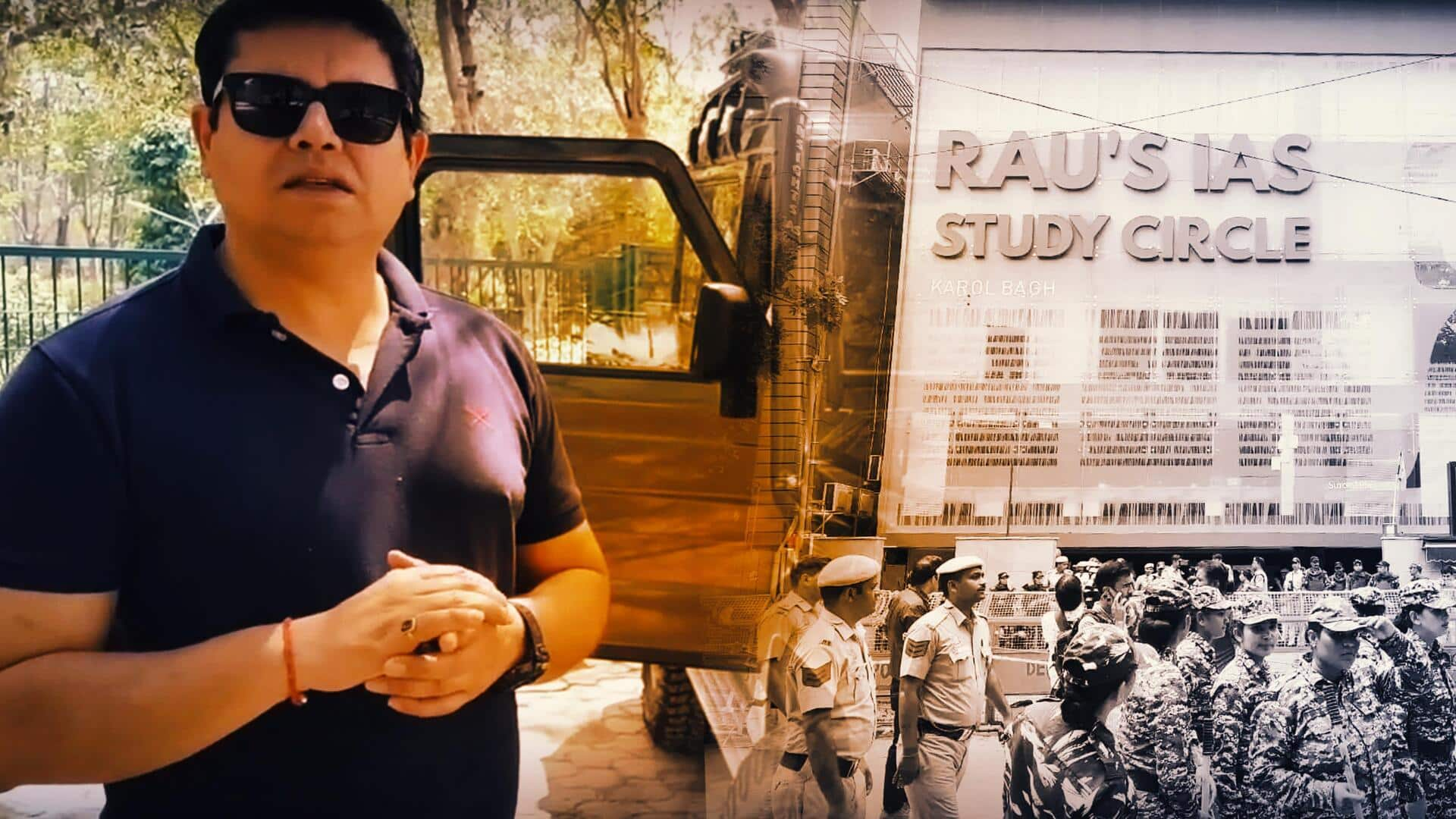
IAS coaching deaths: What was culpable homicide charge against Kathuria
What's the story
After three Union Public Service Commission (UPSC) aspirants died at Rau's IAS Study Circle in Delhi on July 27, seven people—including 50-year-old businessman Manoj Kathuria—were arrested. The charge against Kathuria is that he drove his SUV on a flooded road, causing water to flood the basement, and trapping the aspirants. Charged under Sections 105 (culpable homicide not amounting to murder) and 115(2) (voluntarily causing hurt) of the Bharatiya Nyaya Sanhita (BNS), he has since been granted bail.
Legal proceedings
Kathuria says not at fault
During his bail hearing in Delhi, Kathuria argued he was not at fault as he was driving within speed limits and without road restrictions. The prosecution claimed he could have slowed down. The court granted him bail after the Delhi Police decided to drop the Section 105 BNS charge. Let's try and understand Section 105 of the BNS, and how courts have typically ruled in such cases?
New criminal law
Section 105 of BNS explained
Section 105 of the BNS outlines the penalties for culpable homicide not amounting to murder, similar to Section 304 of the Indian Penal Code. Sentences vary based on the severity of the offense and whether there was intent. Punishments can range from a minimum of five years in prison to a maximum of life imprisonment, depending on the gravity of the crime and its categorization.
Legal context
What's culpable homicide not amounting to murder
The nature of an offense is defined under IPC Section 300 (BNS Section 101), which outlines what constitutes "murder." It specifies that culpable homicide is considered murder unless exceptions apply. The main difference between murder and culpable homicide is the presence of intent. If a person plans and delivers a fatal blow knowing the victim's location, it's murder. Conversely, if someone delivers a fatal blow without premeditation, such as in self-defense, it's considered culpable homicide not amounting to murder.
BNS Section
When is culpable homicide not amounting to murder charge invoked
People are often charged with culpable homicide not amounting to murder in cases where man-made disasters, regulatory violations, or inaction by authorities lead to deaths. This charge usually applies to individuals in supervisory or responsible positions whose actions or failures to act could have prevented the deaths. Such charges have been used in cases like building or bridge collapses, railway accidents, and deaths at construction sites due to lack of safety measures.
Penalty
Charge carries penalty of up to life imprisonment
Even in cases of drunken driving, this charge is invoked. Though these acts might be negligent rather than intentional, investigators apply this charge if they believe the accused knew their actions could result in death. Culpable homicide not amounting to murder carries a severe penalty of up to life imprisonment. Recently, it was used in cases like the Mumbai hoarding collapse that killed 17 people and injured over 80, and a 2019 fire in Surat that killed 22 students.
Court ruling
How courts rule in culpable homicide cases
Notably, in cases of culpable homicide not amounting to murder, the accused often argue they had no intention to cause death. However, investigators and prosecutors argue that the accused should be held liable because they knew their actions could result in fatalities. For example, in the 1997 Uphaar cinema fire in Delhi, where 59 people died, the Supreme Court upheld negligence charges against the cinema's owners, despite arguments for a retrial under Section 304 (II).
Rau IAS center deaths
What Kathuria's lawyers said
In many disaster cases, proving charges under Section 304 (II) IPC is difficult, with courts often finding only negligence rather than culpable homicide. In the Delhi coaching class incident, the businessman's lawyers argue that he should not be held responsible because he had no knowledge of the students being in the basement where the flooding occurred.